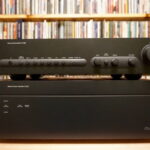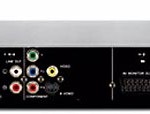GETTING STARTED
The first step in calibrating your television lies in paying attention to your surroundings. Sit in the same spot you’d normally sit in to watch your TV. Then, make sure the lighting is at the same level you’ll be using to watch movies: setting your TV to overcompensate for a brightly-lit room may give you distorted results. Watching in complete darkness may cause undue eyestrain, but a dim, diffuse light behind or to the side of your LCD TV is best. Just make sure to avoid any glare or reflection on the screen.
Next, be sure your display has “warmed up” for at least a half hour before attempting any calibration; this is to ensure that all the components of the display are at normal operating temperature and best approximate normal viewing conditions. You can take this time to familiarize yourself with the various display controls on your particular TV–get the manual out if you have to. The better you know which controls are available on your LCD TV, the better your end results will be. Though different manufacturers give different names to the controls, these are the levels you’ll be adjusting:
1. Black Level, normally found on the Brightness control
2. White Level, usually called Contrast or Picture
3. Sharpness, or sometimes Detail
4. Color Saturation, usually labeled Color, or maybe Chroma
5. Color Tint, also known as Hue
Beyond these basic settings, many modern TVs come packed with so-called “picture enhancements” which in reality do nothing but spoil an otherwise accurate, lifelike picture. Take a moment to dig through your TVs menus and disable any of these “features.” What you’re looking for is anything labeled edge enhancement or detail enhancement, flesh tone or color “correction,” etc. This is a broad generalization, but basically anything not listed in the five controls above can be safely turned off. Another thing to check for is often called a “Picture Mode,” or something similar: in reviews, we often find best results from a Movie or Cinema mode, which usually gives the most accurate picture with the least “enhancement.” A Normal mode is a safe bet when this isn’t available, but definitely avoid anything called Vivid, Dynamic, or Sports mode. Sports mode may make the grass look nice and green, but unless you’re watching The Masters, it’s probably not that green in real life; Sports mode is just ruining the color.
On a similar note, have a look at the options available for your LCD TV’s backlight settings. Like many of the settings, the backlight is probably set to its highest brightness, which is probably too bright for comfortable extended viewing, and shortens the lifespan of your LCD TV as well. Drop this setting down at least to it’s “normal” value, or even try out the Low Power or Power Saver option if it’s available (in dimly lit rooms).







